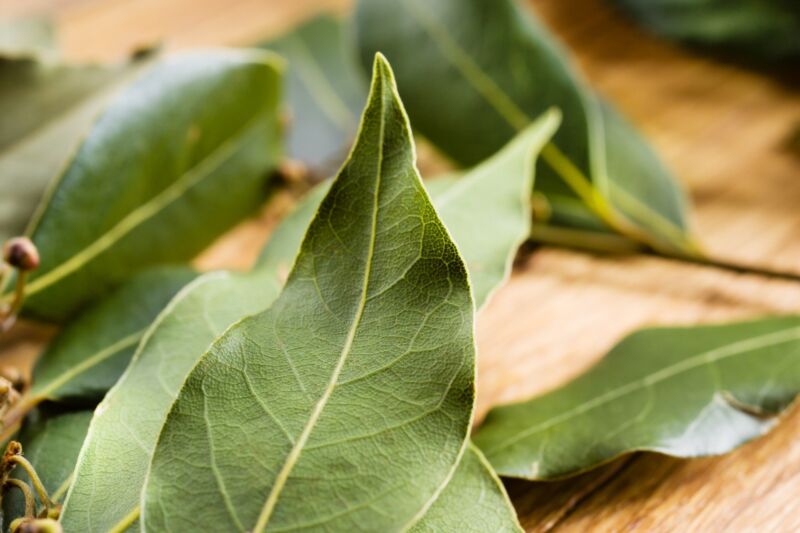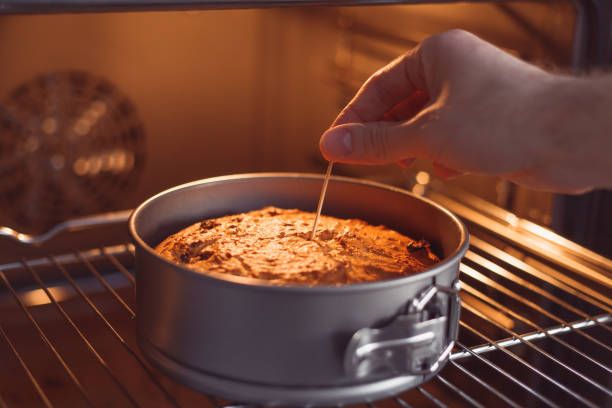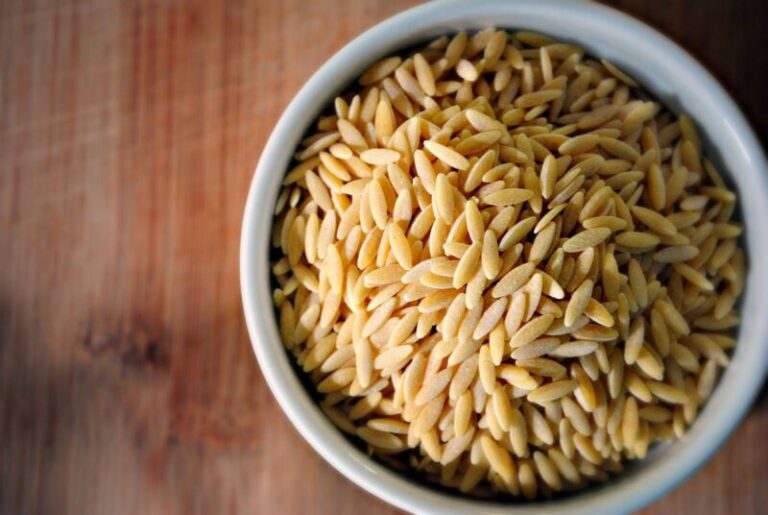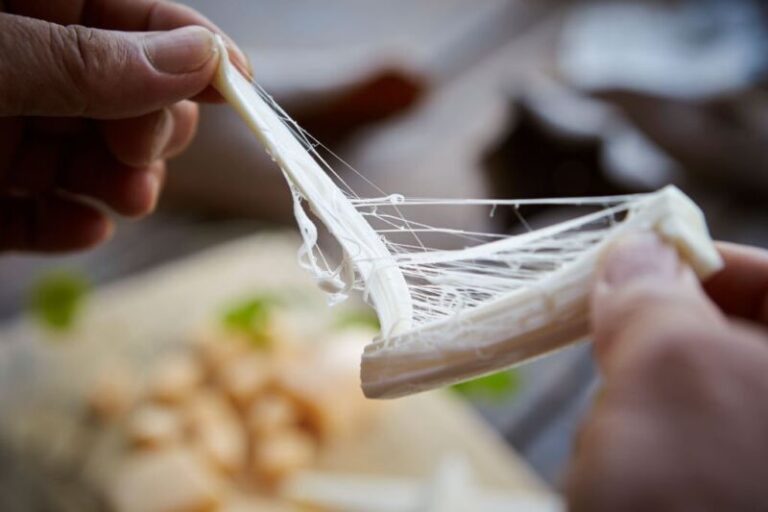Can You Freeze Bay Leaves? How To Freeze Bay Leaves?
Bay leaves are a remarkably versatile ingredient used in many savory dishes across cuisines. Their complex aroma adds depth and nuance to soups, stews, braises, marinades, rice pilafs and more. A single leaf can infuse an entire pot with its woodsy, slightly minty fragrance.
Can you freeze bay leaves? While dried bay leaves keep well in a jar on your spice shelf, fresh leaves have a more complex flavor that deteriorates over time. So for cooks who like to use fresh bay, freezing is an excellent preservation method. Properly frozen bay leaves can retain their aroma and taste for 6 months or longer.
This comprehensive guide provides everything you need to know about freezing bay leaves at home. You’ll learn proper methods for freezing, thawing and using frozen bay leaves to get the most out of this flavorful herb.
An Introduction to Bay Leaves
Bay leaves come from the bay laurel tree, an evergreen shrub native to certain areas around the Mediterranean. The leaves contain aromatic essential oils such as cineole, which provides that characteristic spicy, slightly minty fragrance.
Both fresh and dried bay leaves are common in cooking. Dried leaves have an assertive, potent flavor, while fresh leaves offer more complex nuances. Their taste is often described as mild and pleasantly “green”.
Bay leaves are a key component in spice blends like bouquet garni and fines herbes. They’re indispensable in dishes like stews, marinara sauce, risotto, curry and beans. A few leaves added to stock, sauce or a braise can provide background aroma without an overpowering taste.
When using bay leaves, just remember to remove them before eating! The stiff leaves can be a choking hazard if consumed.
Why Freeze Bay Leaves?
Fresh bay leaves are perishable – their flavor starts diminishing soon after harvest. So for cooks who like using fresh bay, buying in bulk and freezing is an excellent way to preserve quality. Here’s why freezing helps:
- Locks in flavor – Cool temperatures slow down the natural degradation of aromatic compounds, keeping leaves fresh longer.
- Prevents mold – Proper freezing inhibits moisture and humidity that breed mold growth.
- Allows long-term storage – Frozen properly, bay leaves can last up to a year before flavor really deteriorates.
- Lets you buy in bulk – Freezing means you can purchase larger, more economical quantities of fresh leaves and save the excess.
- Maintains versatility – Frozen leaves retain their ability to spice up diverse dishes across many styles of cuisine.
With optimal freezing methods, you can keep a ready supply of fresh-tasting bay leaves to use straight from the freezer or after thawing.
How to Choose Bay Leaves for Freezing
To end up with the best tasting frozen bay leaves, start with high-quality fresh leaves. Here’s what to look for:
- Bright green color – Look for leaves with a vibrant green hue, avoiding any yellowing or browning.
- Intact and pliable – Select leaves that aren’t torn, broken or overly brittle. They should bend slightly without snapping.
- Clean aroma – Leaves should smell fresh and pine-like without any musty or stale overtones.
- Dry – Avoid leaves with moisture on them or any visible mold. Pick dry leaves for best freezing results.
- Organic – Opt for organic if possible to avoid any chemical residues from pesticides.
Also taste a leaf before freezing. It should have a pleasant mild herbal flavor. Any bitterness or staleness will only intensify during freezing.
For ideal flavor, freeze bay leaves at their peak freshness. Don’t let leaves sit around for too long before freezing.
How to Prepare Bay Leaves for Freezing
Bay leaves often come in bunches fresh off the branch. You’ll need to separate and clean them before freezing:
- Remove leaves from stems. Use scissors to snip leaves away from the woody stems. Discard any leaves that are brown or damaged.
- Rinse under cool water. Give leaves a quick rinse to remove any dirt or residue. Don’t soak leaves.
- Pat dry with towels. Spread leaves in a single layer and gently pat dry to remove excess moisture. Wet leaves will freeze into a solid clump.
- Let air dry for 1-2 hours. For best results, lay leaves on towels for an hour or two to fully air dry before freezing.
Proper washing and drying helps preserve the leaf’s cell structure and prevent damage during freezing. Now they’re ready for the freezer!
How to Freeze Bay Leaves
Freezing bay leaves is simple but there are some tips to follow for best results:
- Work in small batches. Don’t overload your freezer. Freeze leaves in batches of around 1-2 cups at a time for faster, more even freezing.
- Spread in a single layer. Arrange washed, dried leaves in a single layer on a sheet pan or plate. This prevents leaves from clumping or freezing together in a solid mass.
- Freeze first for 1-2 hours. Keep the sheet pan of leaves in the freezer for 1-2 hours until completely frozen. Then transfer to bags or containers.
- Pack in airtight containers. Use rigid plastic containers or thick freezer bags. Squeeze out excess air before sealing to prevent freezer burn.
- Label everything. Mark containers or bags with the leaf type and freeze date so you know what’s inside and when it was frozen.
- Work quickly. Move leaves into the freezer right after washing/drying. The less time at room temperature, the better.
Follow these steps for perfectly frozen bay leaves every time. Avoid stuffing too many leaves into one container. Portioning out smaller batches helps the leaves freeze faster to lock in freshness.
Proper Storage of Frozen Bay Leaves
Once frozen, bay leaves must be stored properly to retain maximum flavor and prevent freezer burn. Follow these storage guidelines:
- Keep frozen. Store at 0°F or colder. Set your freezer to -4°F or below if possible. Use a thermometer to monitor the temperature.
- Minimize air exposure. Press out all excess air from bags and containers before sealing to protect against oxidation.
- Avoid thawing. Prevent accidental thawing by keeping the freezer cold. Don’t open the door more than necessary.
- Check for freezer burn. Discard any leaves that show signs of freezer burn, like grayish-brown dry spots.
- Use older leaves first. When grabbing frozen leaves for a recipe, be sure to use the oldest ones first. Follow a first-in, first-out system.
With optimal freezing and careful storage methods, your frozen bay leaf stash can retain peak quality for 6-12 months.
How Long Do Frozen Bay Leaves Last?
When properly stored in an airtight container at a constant 0°F or below, frozen bay leaves can retain excellent flavor and aroma for approximately 6 months. Leaves frozen at peak freshness can sometimes last up to 1 year before losing punch.
Here are some signs that your frozen bay leaves are past their prime and should be discarded:
- Faded, drab olive green color
- Dry, brittle or mushy texture
- Loss of essential oils, leaving less aroma
- Absorption of freezer odors like fish or onions
- Unpleasant metallic or bitterness on the palate
For the best results, try to use your frozen bay leaves within 6 months. Monitor leaf quality over time and continue adjusting your storage methods as needed. The lower the consistent storage temperature, the longer leaves will last.
Thawing Frozen Bay Leaves
Frozen bay leaves can either be thawed before using, or tossed right into the cooking pot or pan frozen. Here are thawing guidelines:
- Thaw in refrigerator: Place frozen leaves in an airtight bag or container and let thaw overnight in the fridge. This gradual thawing prevents moisture loss.
- Thaw at room temperature: Leave sealed frozen leaves out on the counter for 30-60 minutes until pliable. Avoid leaving too long.
- Thaw in water: Submerge a sealed bag of frozen leaves under cool water. Change the water every 15-20 minutes until thawed.
- Microwave thawing not recommended: Microwaving can create hot spots that damage cell structure.
- Use immediately after thawing: For best flavor, use thawed bay leaves right away rather than trying to refreeze.
With gentle thawing methods, thawed bay leaves can be used just like fresh. Handle them delicately as they may remain a bit fragile after freezing.
Substituting Frozen for Fresh Bay Leaves
Frozen bay leaves make an excellent substitute for fresh leaves in any application. Their flavor profile remains intact through proper freezing.
The main difference is that frozen leaves tend to be more brittle. Handle thawed leaves gently or just toss them in frozen. Remove them before serving for safety.
Otherwise, use frozen bay leaves one for one in place of fresh:
- Add them to stocks, soups, sauces and stews.
- Make infused olive oil by adding leaves to warmed oil.
- Mix into rice pilaf, risotto or curry spice blends.
- Use in marinades, especially for proteins like chicken, pork and seafood.
- Mix into aromatics like mirepoix when making braises or roasts.
Frozen bay leaves retain their versatility. Let them infuse all your cooking with that unmistakable aromatic fragrance.
Cooking With Frozen Bay Leaves
Frozen bay leaves take beautifully to most cooking methods. Their fragrant oils are released directly into the dish as they thaw and heat. Here are some tips:
- Simmering/braising – Add frozen leaves at the start to slowly infuse the entire dish. Remove before serving.
- Sautéing – Add frozen leaves once aromatics start to soften for immediate fragrance and color.
- Roasting – Mix frozen leaves into rubs or sprinkle over proteins or vegetables before roasting.
- Grilling – Toss chopped frozen leaves in olive oil, then brush over proteins on the grill. Provides great aroma.
- Baking – Add to doughs and batters for cooked goods like bread. Removes easily after baking.
- Raw applications – Thaw and mince leaves before using raw in uncooked preparations or as garnish.
Frozen bay leaves often perform better than dried since their oils remain intact. Play around with the best timing to allow for thawing and flavor release.
Can You Refreeze Thawed Bay Leaves?
For best flavor and texture retention, avoid refreezing bay leaves after they’ve completely thawed. The leaves become damaged and deteriorate faster through repeat freezing and thawing.
However, if you thaw leaves in a sealed bag submerged in cold water, you can often refreeze once with minimal quality loss. Refreezing works best if done promptly after thawing, before leaves have warmed to room temperature.
Only refreeze intact, undamaged leaves that still appear fresh. Be sure to press out excess air from the storage bag before re-sealing and returning to the freezer.
Ideally though, thaw only the amount of leaves needed for a recipe. Use any remaining thawed leaves quickly within a day or two. Consume frozen inventory on a first-in, first-out basis.
Storing Unfrozen Bay Leaves
For fresh bay leaves you want to use within 2-3 months, proper storage can preserve flavor without freezing:
- Keep leaves dry – Store in an airtight container out of humidity and moisture. Excess moisture invites mold.
- Refrigerate – The cool environment of the fridge will slow deterioration of flavor compounds. Monitor humidity.
- Use breathable packaging – Allow some air exchange to prevent condensation by using paper bags or mesh produce bags.
- Watch for stale leaves – Discard any leaves that are yellow, brittle or smell musty. These are past their prime.
With optimal storage conditions, fresh bay leaves can last 2-3 times longer than at room temperature. But freezer storage is still best for long-term preservation.
FAQs
Can you freeze dry bay leaves?
Yes, freeze-dried bay leaves freeze very well since their moisture content is low. Their concentrated flavor compounds remain locked in nicely.
Do bay leaves freeze well compared to other herbs?
Bay leaves contain sturdy oils and compounds that freeze better than more delicate leafy herbs like cilantro or parsley. Their structure holds up well.
Can you freeze ground bay leaf powder?
It’s best to freeze leaves whole rather than ground to powder or crushed. The intact leaf cell structure protects the oils better than when leaves are cut or crushed.
Can you freeze bay leaves in ice cube trays?
You can add whole bay leaves to water in ice cube trays, but avoid making “bay ice cubes” for cooking. The leaves often discolor the water over time.
Should you blanch bay leaves before freezing?
Blanching is not necessary before freezing bay leaves. Since they’re used dried in cooking, there’s no need to inactivate enzymes or set color like with vegetables.
Can you freeze bay leaf pesto or paste?
It’s best not to freeze homemade blends like pestos or pastes containing bay leaves. The frozen, crushed leaf pieces will lose flavor quickly.
How do you know if frozen bay leaves are bad?
Signs that frozen bay leaves are past prime and should be discarded: faded color, dry/mushy texture, musty or bitter smell, absorption of freezer odors.
Final Tips for Freezing Bay Leaves
Here’s a final quick summary of tips forsuccessfully freezing fresh bay leaves to lock in flavor:
- Select high-quality, undamaged fresh leaves. Discard any brown or moldy ones.
- Wash leaves gently in cool water and pat thoroughly dry before freezing.
- Work in small batches for faster freezing. Don’t overload freezer.
- Spread leaves in a single layer on a sheet pan and freeze initially for 1-2 hours before packing.
- Store leaves in airtight containers or bags removing all excess air. Avoid freezer burn.
- Label everything clearly with type of leaf and freeze date.
- Freeze and store at 0°F or below for 6-12 months of optimal flavor.
- Handle frozen leaves delicately. Thaw gradually using lower temperatures.
- Avoid refreezing thawed bay leaves for best quality.
Following these simple guidelines, you can keep a supply of frozen bay leaves on hand that retain the nuanced flavor and aroma of fresh for months on end. Happy freezing!
Conclusion: Can you freeze bay leaves?
Freezing is hands-down the best way to preserve fresh bay leaves for long-term use. With proper freezing, storage and thawing, bay leaves can maintain their signature scent and taste for 6 months up to a year.
By starting with prime fresh bay leaves and taking steps to freeze them quickly at peak quality, you can lock in fantastic flavor. Use well-sealed airtight containers and frozen storage temperatures of 0°F or below.
Thaw leaves gently before use, or just add them frozen right into your cooking for convenience. Enjoy their bright, complex flavor in soups, stews, sauces, rice dishes and more all year round with your stash of properly frozen bay leaves close at hand.






